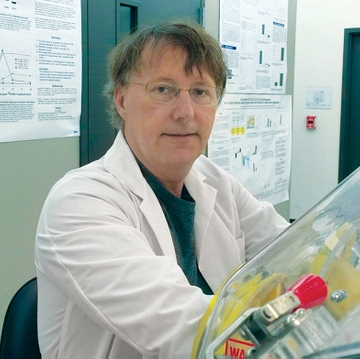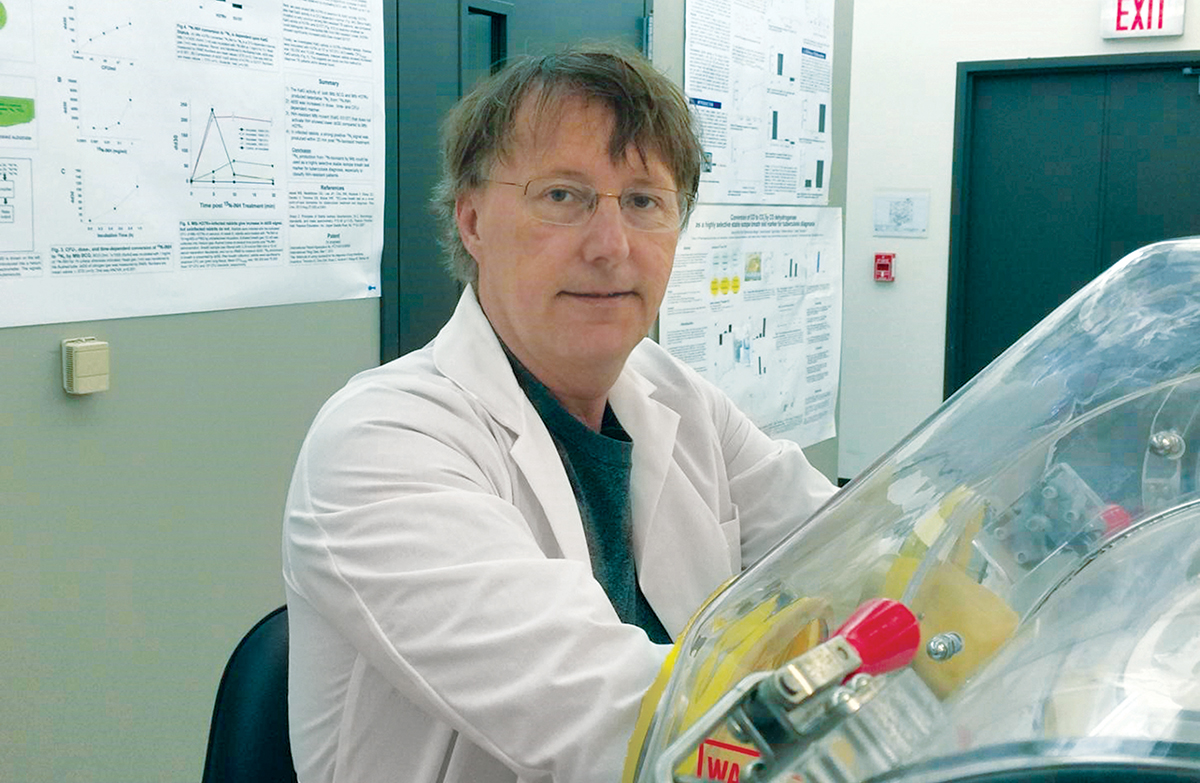Preparing for Disaster: UNM Hospital Participates in Region-Wide Emergency Training

Rapid diagnostic test takes on tuberculosis and other deadly diseases
"What I kind of do is put unusual things together," says Graham Timmins, an associate professor in the University of New Mexico College of Pharmacy's Department of Pharmaceutical Sciences.
It's a modest statement from a researcher who holds seven UNM-affiliated patents that involve innovative technology to quickly diagnose tuberculosis and other lung infections. Another of his patents proposes a more effective treatment for TB, and yet another involves evaluating sunscreens for their protection against all potentially damaging solar radiation.
His research focuses on using stable isotope-related compounds and free radical biology - the unusual things he puts together - to better diagnose and treat some common and deadly diseases.
Asked which of those patents he is most proud of, Timmins groans. "Ahh," he says. "It's like which of your children do you love the most?"
Let's start with his rapid breath-test technology, known as the urease breath test. Ureases are bacterial enzymes that are expressed by many bacteria. "If you look at serious lung pathogens," Timmins says, "most of them have it."
Timmins' stable isotope-labeled tracer compound, inhaled by a patient through a nebulizer or inhaler, fills the entire lung and detects and highlights areas of infection upon exhalation - and does it within minutes.
"You can screen for tuberculosis," Timmins says. "You can see if somebody's got pneumonia. You might be able to see the difference between viral and bacterial pneumonia."
His rapid breath-test technology patents have led to the creation of a company, Avisa Pharma, headquartered in Santa Fe. The company has raised $8 million and its first clinical development is based on Timmins's rapid breath test for TB, with plans to expand research into pneumonia and cystic fibrosis.
If there is a theme to Timmins' work, it is speed.
"What we're trying to do is have a very, very rapid screening test for TB so the whole thing could be over in five or 10 minutes," Timmins says. The fastest TB diagnostic test now takes three hours and the technology it uses is relatively unportable. TB is most common in developing countries where transportation is limited - it can take a full day for a patient to travel to a clinic or a clinician to travel to an area to test for TB.
"With this," Timmins says, "you could put everything in a backpack and you could just cycle to a village and test a whole lot of people. If somebody can be diagnosed and have their drug susceptibility determined in that single encounter, then you don't lose them to follow-up. That's a major improvement."
Another patent addresses the efficacy of sunscreens in protecting against melanoma. Sun Protection Factor ratings only measure protections against UV radiation, not all of the potentially damaging wavelengths. Timmins' patent involves analyzing a sunscreen for all the potential melanoma protection factors.
Yet another involves using the breath test to diagnose pseudomonas aeruginosa in cystic fibrosis patients. Once it is established, it's very difficult to eradicate, but it can be eliminated when caught early, so Timmins hopes the test will significantly improve the lives of some cystic fibrosis patients.
While patents are prestigious and pharmaceutical companies may show profit, Timmins says the questions that underlie the research are his real motivators.
"The reason you do it is to get at these questions," he says. "Most smart people just like working problems."
